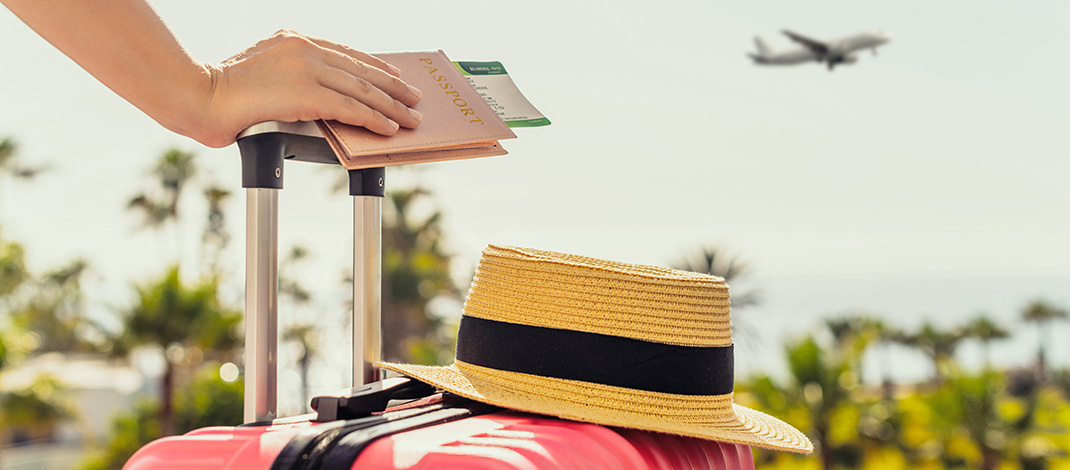More business people combining business trips to leisure trips
By Deborah Jeanne Sergeant

Work trips are fun again. Often called “bleisure” trips the portmanteau combines “business” and “leisure” — symbolic of the mixed nature of the getaway.
Tracy Chamberlain Higginbotham, owner of Women TIES, LLC in Syracuse, enjoys any chance she has to take a vacation while on a work trip.
“I am always looking for opportunities to combine business and pleasure trips because it makes perfect sense if I am on the road for business, especially in a familiar or unfamiliar city, to stay a day later to enjoy it,” she said. “With the price of travel being high, it makes logical sense to combine the two if possible.”
Before the pandemic, Higginbotham accepted a paid speaking engagement in Lake Placid. The location is close enough that she extended her trip to a neighboring state to visit her brother.
“I wouldn’t have otherwise had the chance to travel that close to where he lived and schooled,” she said.
She added that for tax purposes she separates her business and personal receipts to avoid mistakes in claiming personal expenses on her business tax deductions.

Randy L. Zeigler, certified financial planner and private wealth adviser with Ameriprise Financial Services, LLC in Oswego, travels fairly regularly for business. When his trip’s purpose is to meet clients, he typically travels solo.
“When I am traveling to attend training conferences once or twice per year, I often bring my wife along with me as our children are all grown and out of the house,” Zeigler said. “We sometimes extend our time to make a short vacation out of the trip, especially if my wife is interested in the destination location.”
As a self-employed person, he pays the full costs for all of his trips, giving him latitude to decide his own travel plans.
“Like most self-employed people, I do not take enough time off each year and have never had even a two-week vacation in my entire career,” Zeigler said. “I cannot afford that much time away from my office.”
Blending pleasure with business on a trip makes sense, especially for the self-employed and otherwise time crunched. Adding an extra day onto a trip for relaxation is easier than taking off an entire week solely for fun.

Robin Guyle, travel adviser for Anna Day Travel in Oswego, affiliate of Cruise Brothers in Rhode Island, said that the workcation trend has grown because fewer businesses are meeting via virtual platforms compared with during the pandemic.
“They’re going back to meeting in real life,” Guyle said. “Vegas and Orlando are places people are going again.
“A lot of times the business will pay for the employee and the employee pays for everyone else going with them. Some will extend it for a week.”
Companies want to revive face-to-face meetings because of the serendipitous collaboration they foster and the esprit de corps that’s tough to generate through screens. Making a business trip into a bleisure trip makes sense since the host cities that offer meeting space large enough for trade shows and training sessions also boast many other attractions. By offering employees a chance to take a few vacation days before or after a work trip, employers can provide a small perk at no additional cost to the company.
As Higginbotham alluded, workers engaging in bleisure travel should separate their personal expenses from business expenses. For example, adding another day onto the trip would mean meals and extra hotel costs would not be deductible. Costs related to extra people coming along and for any outings and meals not related to work would also not be deductible.
In addition to the bleisure trip, the “workcation” is here to stay. During the pandemic, most office workers went fully remote and many still work remotely. While on a “workcation,” employees don’t take any paid time off but instead work during their ordinary 9 to 5 hours from a different location. Once they clock out, it’s time to enjoy the amenities of their vacation spot since they’re on their own time. The employer typically knows that the employee is away from home. But all the expenses are up to the employee to cover.
Unlike the bleisure trip, the workcation may not be in a hotel with a business center set up to facilitate work. Employees taking a workcation should make sure that their destination offers reliable Wi-Fi and cell service. The location should offer a reasonable place to focus, such as a desk and chair in the room, if that is helpful. Although lounging by the shore or pool while pecking away at a laptop and taking calls may seem relaxing, it’s also distracting.



